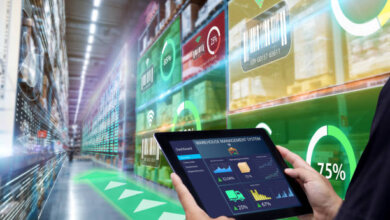
As we step into 2025, food delivery app development is undergoing a radical transformation, thanks to Artificial Intelligence (AI). What was once a matter of building apps with static menus and simple ordering functions is now evolving into a dynamic, predictive, and hyper-personalized experience. AI is not just enhancing how these apps function—it’s redefining the entire user journey, from search to delivery.
If you’re planning to enter or scale in the food delivery market, understanding the growing influence of AI in this space isn’t just beneficial—it’s essential.
The AI Revolution in Food Delivery Apps
The days of one-size-fits-all apps are long gone. Consumers today expect smarter, faster, and more personalized services. This is where AI comes in, bringing a host of capabilities that are revolutionizing food delivery app development:
- Smart recommendations
- Predictive analytics
- Automated delivery logistics
- Customer support via AI chatbots
- Dynamic pricing and real-time promotions
Let’s explore how AI is reshaping food delivery app development in 2025.
1. Personalized Food Recommendations
One of the most noticeable ways AI is transforming the user experience is through intelligent recommendations.
By analyzing customer behavior, dietary preferences, previous orders, time of day, and even weather patterns, AI engines can curate menu options that feel personal to the user. For instance, someone ordering lunch on a rainy day might be shown comforting soups or hot beverages first. These subtle personalizations lead to increased satisfaction and higher conversion rates.
In 2025, personalization is no longer a bonus—it’s an expectation. And only apps built with AI-integrated engines can meet that expectation consistently.
2. Smarter Search with Natural Language Processing (NLP)
AI’s NLP capabilities are now allowing users to search using voice commands or casual phrases like, “Show me something spicy under 300 calories.” Unlike keyword-based searches, AI understands context, intent, and even tone. This makes food discovery more intuitive and less frustrating.
Such smart search features are becoming essential in modern food delivery app development, especially for Gen Z users who favor voice-enabled experiences.
3. Automated Customer Support
AI-powered chatbots are changing the game in customer service. These bots handle everything from order updates to complaint resolutions, all in real time. By reducing the load on human support teams and responding instantly 24/7, AI ensures smoother communication and improved customer retention.
In 2025, food delivery businesses without smart chatbot integration risk falling behind the competition—especially during peak hours when human support can get overwhelmed.
4. Dynamic Pricing and Promotions
AI can help delivery platforms adjust prices dynamically based on demand, location, time of day, or inventory levels. For example, if a certain dish is about to expire, AI can automatically apply a discount to boost its sale. Or during lunchtime in a corporate district, prices can be tweaked to balance supply and demand.
This data-driven pricing strategy improves revenue, reduces waste, and ensures better restaurant management—all powered by real-time AI algorithms.
5. Intelligent Route Optimization
Delivery delays are one of the biggest deal-breakers in food delivery. In 2025, AI’s role in route optimization is helping address this issue at scale.
Machine learning algorithms evaluate multiple variables—like traffic, weather, delivery time slots, and distance—to assign the most efficient routes to delivery personnel. The result? Quicker deliveries, reduced fuel costs, and happier customers.
AI also helps automate delivery partner allocation, ensuring the right person is assigned to the right task at the right time.
6. Fraud Detection and Data Security
Security is a top priority in app development today. AI enhances fraud detection by monitoring transaction behavior in real time. Unusual activities—such as multiple orders from different locations using the same account—can be flagged immediately.
AI also helps detect bot activity, prevent coupon abuse, and ensure secure payment gateways, giving users a safer experience.
7. Predictive Demand Forecasting
Restaurants and food aggregators need to manage resources efficiently. AI helps predict order spikes by analyzing past data, holidays, events, and weather. This enables restaurants to stock the right ingredients, prep the right quantity, and reduce food wastage.
In turn, app developers can also ensure app servers are scaled accordingly during forecasted demand surges.
Why Businesses Must Embrace AI in 2025
The food delivery market is fiercely competitive, and customer expectations are at an all-time high. Incorporating AI is no longer optional—it’s the key to staying relevant, profitable, and future-ready.
Here’s what businesses stand to gain from AI-led food delivery app development:
- Higher customer engagement and retention
- Optimized logistics and operational costs
- Increased revenue through intelligent upselling
- Faster order fulfillment and happier customers
- Scalable, data-backed decision-making
Whether you’re a startup or an established restaurant chain, investing in AI features will elevate your app from functional to exceptional.
Final Thoughts
2025 marks a new chapter in food delivery app development, one where AI is at the forefront of innovation. From transforming how users interact with menus to revolutionizing last-mile delivery, AI is making apps smarter, faster, and more human-centric.
If you’re thinking of developing a food delivery app—or upgrading your current platform—ensure AI integration is part of your roadmap. Because in the fast-paced world of food tech, intelligence isn’t just a feature anymore. It’s a foundation.




